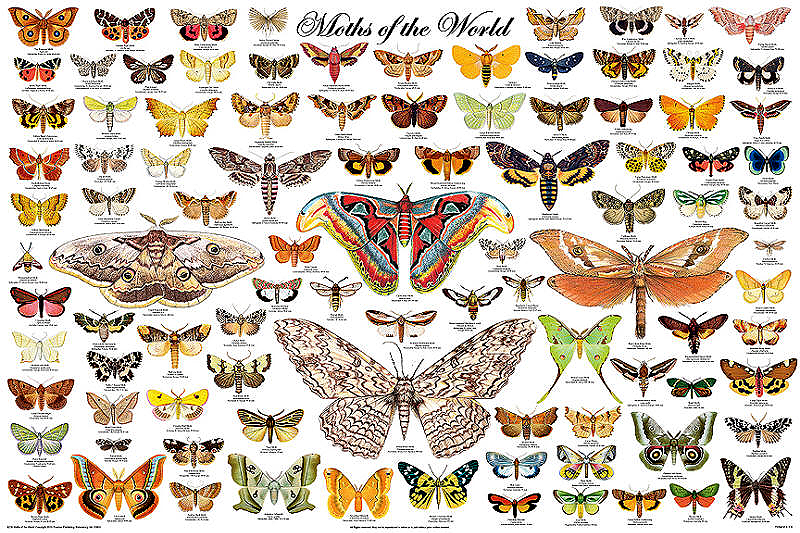|
|
|
Moths of the World Poster |
|
 |
A226 Moths of the World
Our
beautiful Butterflies of the World has always been an
extremely popular title. Now it has a companion which uses
the same graphic design, resulting in a visually striking
matched set.
The Lepidoptera order / clade contains the butterflies
and moths. There are over 180,000 known species. In general,
butterflies fly during the day and moths fly at night. The
most obvious physical difference between them is the
feelers, or antennae. Most butterflies have thin slender
filamentous ones which are club-shaped at the end. Moths, on
the other hand, often have comb-like or feathery antennae,
or ones that are filamentous and unclubbed.
We often think of the moth as the little brown pest that
likes to eat our clothes, but the "night butterflies"
include some of the most spectacular lepidoptera. Some of
the species are huge. The Giant Peacock Moth, Saturnia pyri,
has a ten-inch |
| Laminated |
No. A226L |
$18.95 |
|
| Non-Laminated |
No. A226F |
$9.95 |
|
|
|
|
|